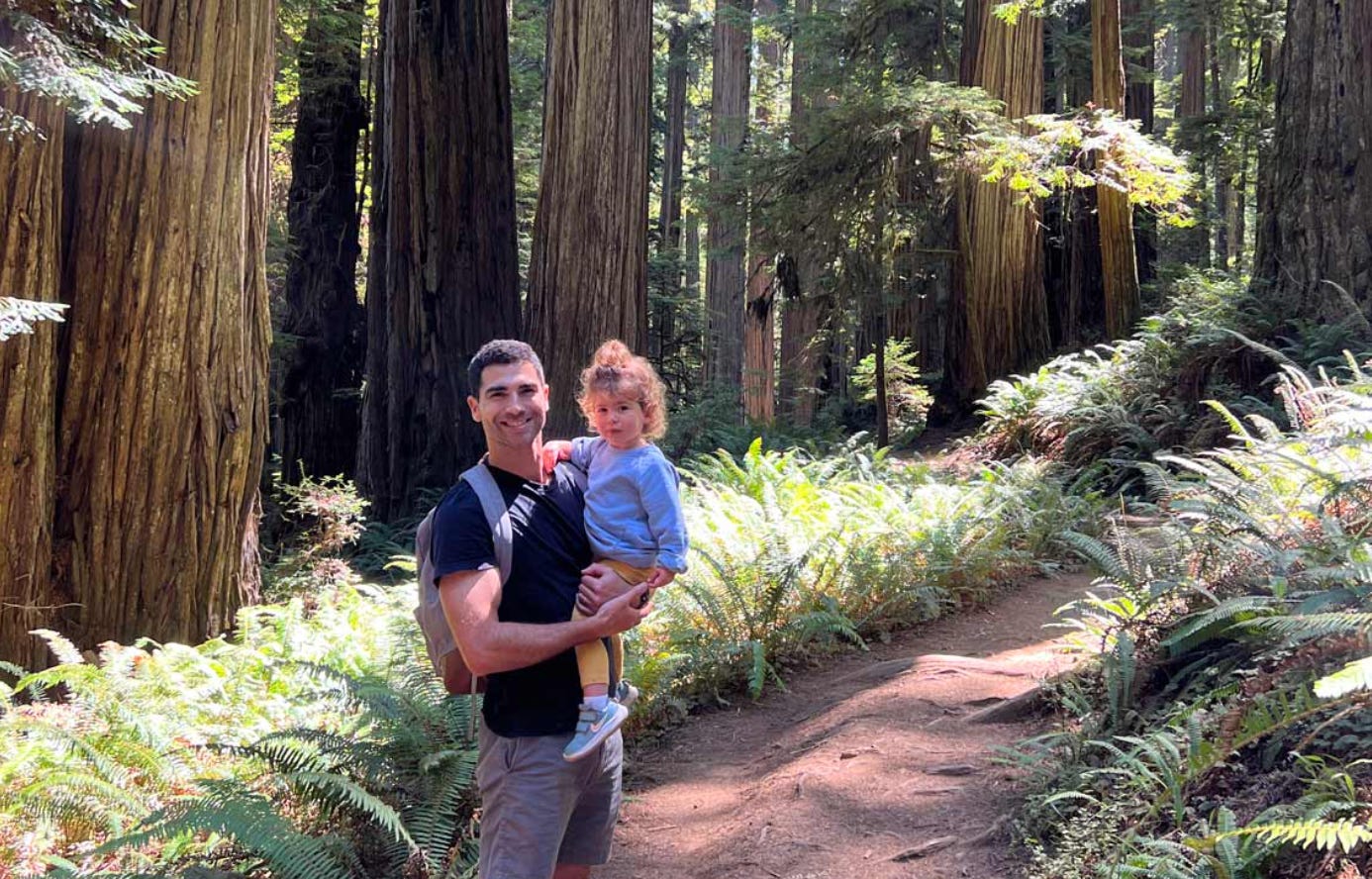Take the 101 North to Eden
I loved writing this piece on the connection between the Big Trees and my Judaism for Redwoods Magazine
Pardon my inactivity for the past month. I’m a bit burnt out but I’ve also been making moves to take @jewslovetrees to the next level, including a podcast, a live show, and adapting Must Love Trees: An Unconventional Guide (buy it) for television. I’m also enjoying my time with my three-month old and nearly three year-old and my wife, aka my family, so excuuuuuusse me!
Here’s a piece I wrote for Redwoods Magazine, text copy-and-pasted for sharing-friendliness purposes. But please do read it on their original website, and consider donating to the Save the Redwoods League so that they can continue their mission of big tree protection and restoration:
Take the 101 North to Eden
When I was 4, I started going to synagogue. The same year, I cracked open the 1990 World Book Encyclopedia and was transfixed by an illustration under the article title, “Redwoods.” It’s the first memory I have where the natural world rose to a mystical level in my imagination.
The imagery of religion and nature began to merge for me. As simplified snippets about the Garden of Eden began to make their way into my Jewish pre-school curriculum, I quickly filled it in my mind’s eye with magnificent trees. Religion was merely bible stories for me then, and my Eden was populated with marvelous megalodon sharks in the ocean, tremendous amethyst geodes on the shore, and towering redwoods on the land. Adam and Eve? Couldn’t tell you.
But this imaginary place soon fell away to the external needs of adolescence. Trees? Sharks? King David stories? These subjects don’t help much when you’re reliably getting pinned in 12 seconds on the wrestling mat.
It would be many years until my enthusiasm for the big trees returned. Years of religious disillusionment and professional failure as an actor, years of falling in love and relocation to Los Angeles.
Why it took me four years to actually see the sequoias when they were only a stone’s throw away I will never know. But as my wife and I navigated pregnancy during the early days of the pandemic, visiting the giant sequoia groves seemed like a pretty safe idea.
There’s a video of me when I saw my first big tree. I’m covering my mouth as if scandalized, giggling like an idiot, and muttering something like “I feel like I’m on mushrooms.” Not wood ears, just to be clear. Something ecstatic had returned to my life. I made it a point to share this experience on social media. It resonated with my followers.
I started to heal my relationship with Judaism, reasoning that I would emphasize all the good parts with my daughter and leave the rest behind. For a while, I felt like I had found some equilibrium—trees and tradition seemed to share the same nook in my soul. And, for the first time as a performer, people cared about what I had to say. Growth was happening everywhere, the world was newly green, and, finally, my daughter was born.
In 2021, the sequoias burned. I went back the next year on my own. The holy cathedral of trees at Muir Grove in Sequoia National Park had been desecrated, shot through with the stem of a charred, thousand-year-old giant unable to support itself amidst the fire. It was a horrible moment for me. For a few days, I allowed myself to indulge in some heavy-duty fatalism: “This is all gone already. Everyone should get used to it.”
But a few weeks later, we took our 2-year-old on a planned trip to Jedediah Smith Redwoods State Park. It was like discovering a second temple, one that might swallow you up at any moment. The Eden of my childhood—constructed from textbook illustrations and Saturday morning sermons—was real.
Lucy will never have to situate her Eden in an imaginary world. She sees and touches and experiences it. At one point on our trip, she bent down to talk to a banana slug on the base of an ancient, moss-covered giant. Imagine, I thought, trying to tell this child that it’s only a matter of time for these trees.
Instead, I have one message for her:
Eden is just a stone’s throw away, if we wish it to be.





Thank you for this beautiful, hopeful message!
Not me getting all teary eyed over an email about trees. Beautiful story, thanks for sharing.